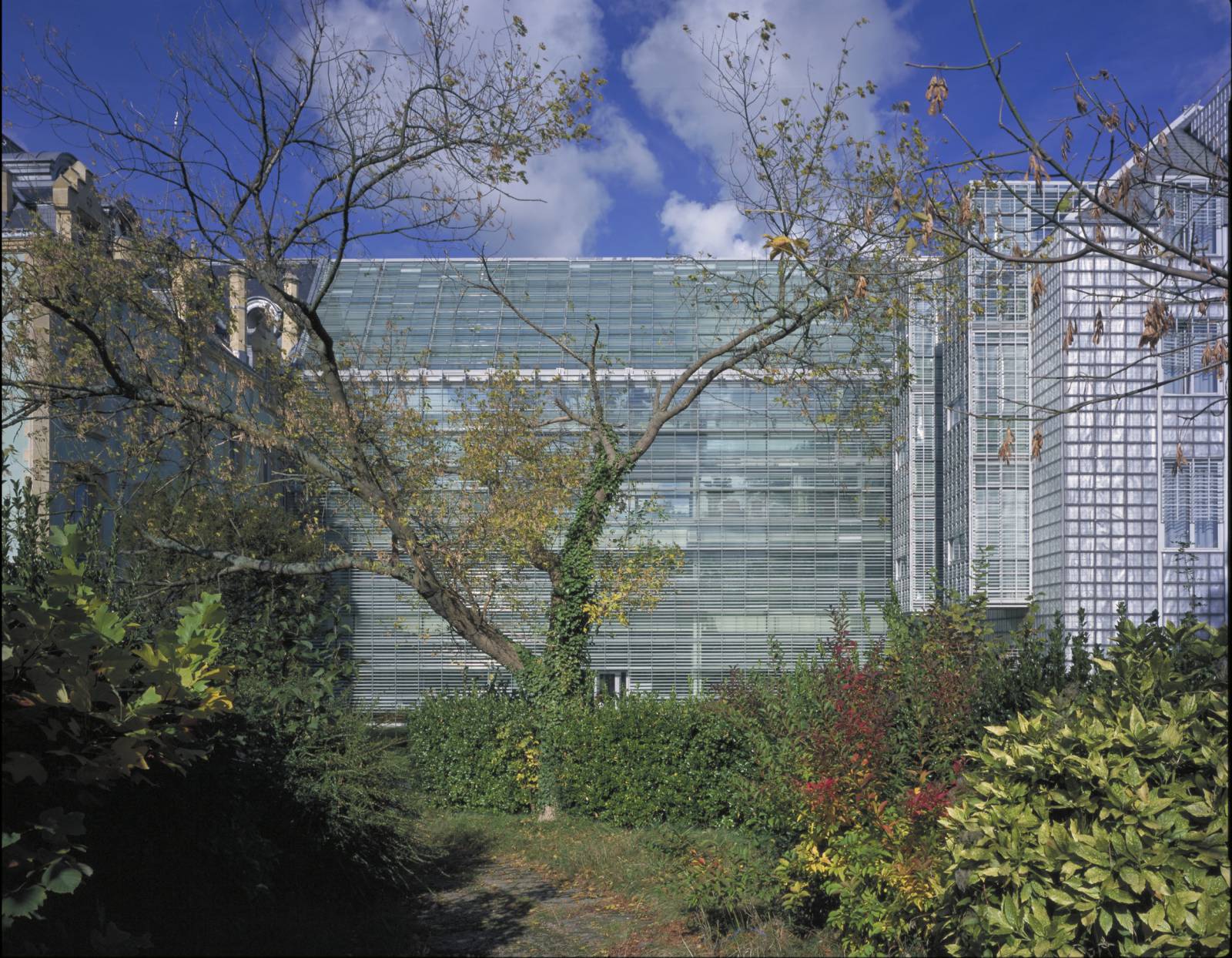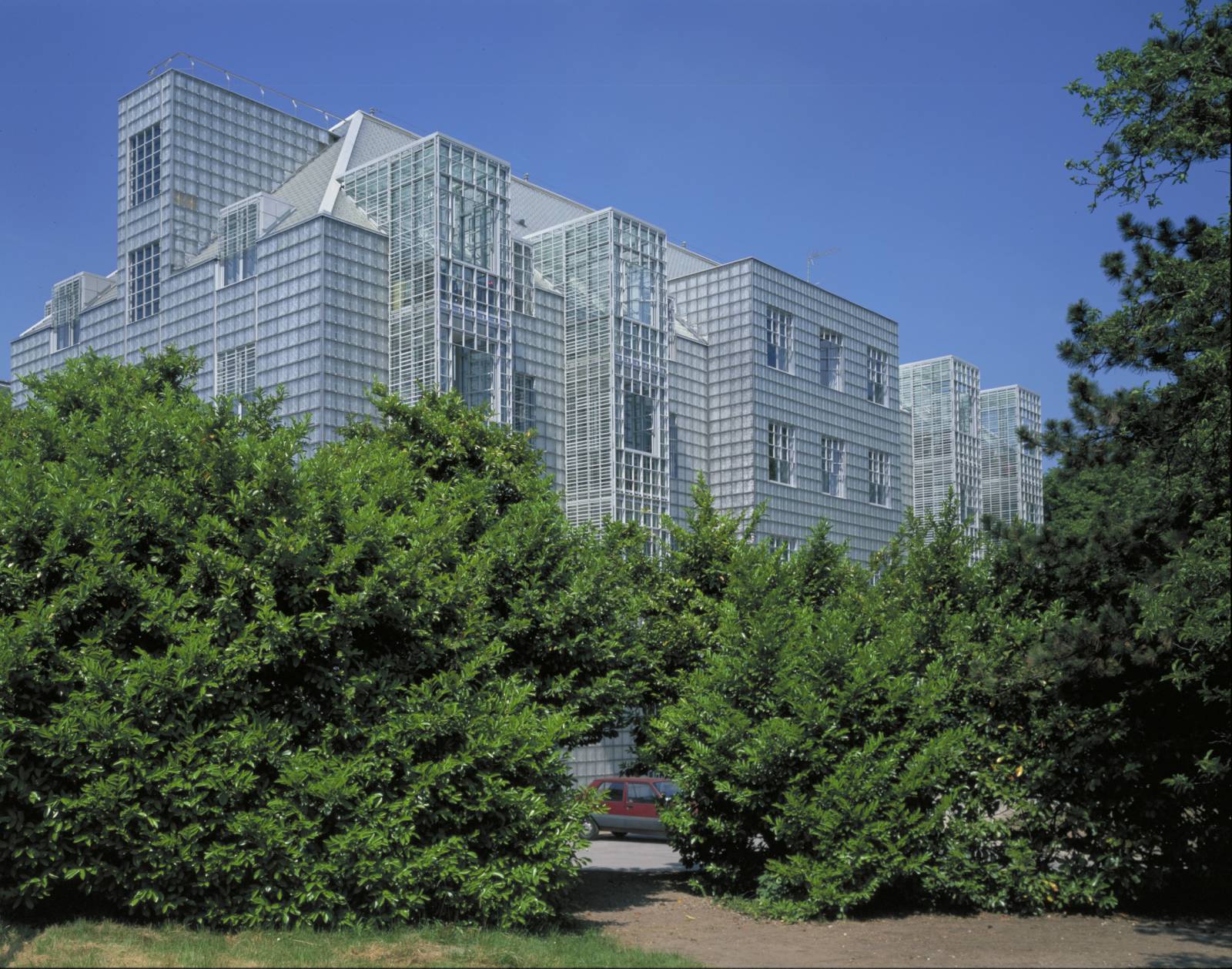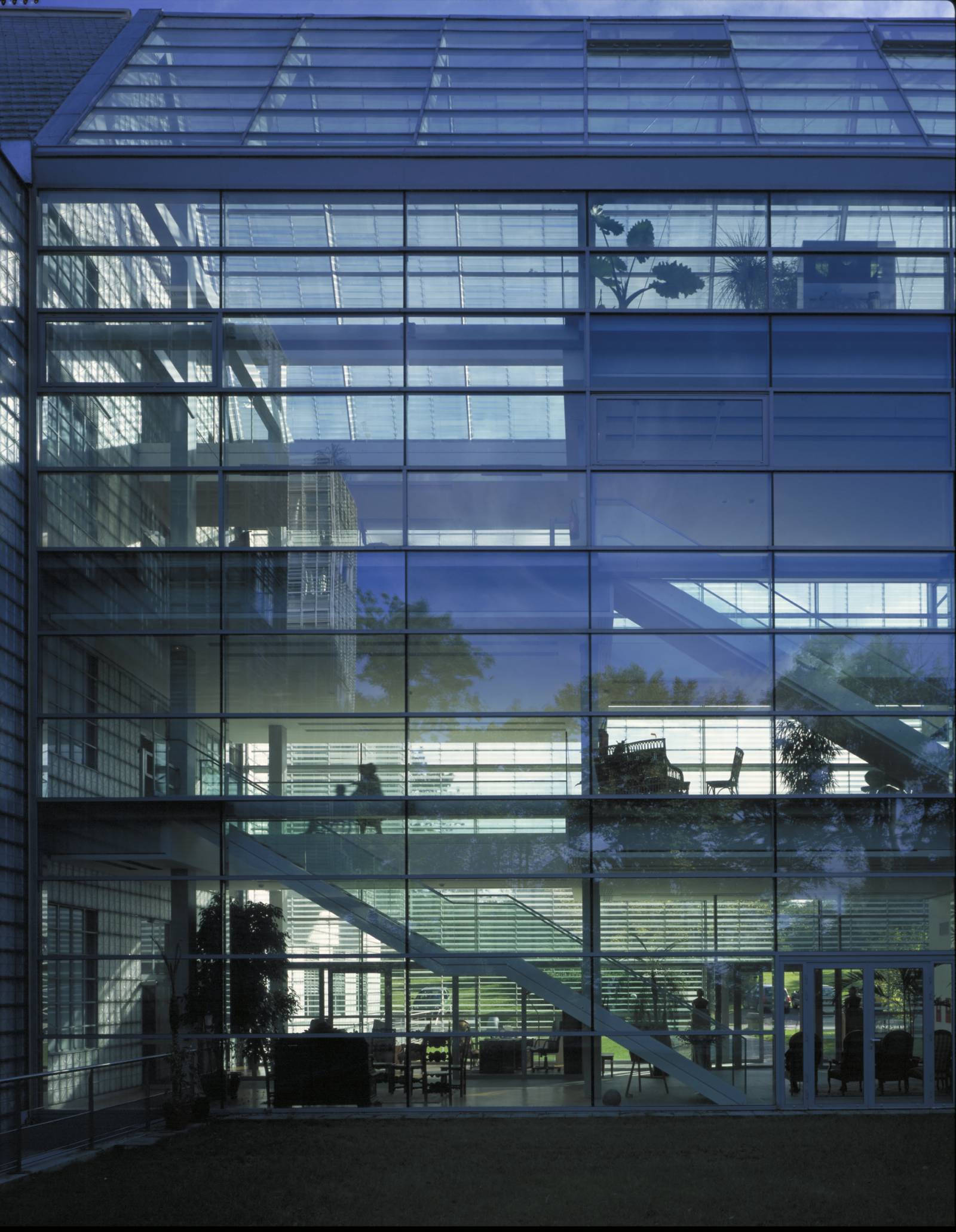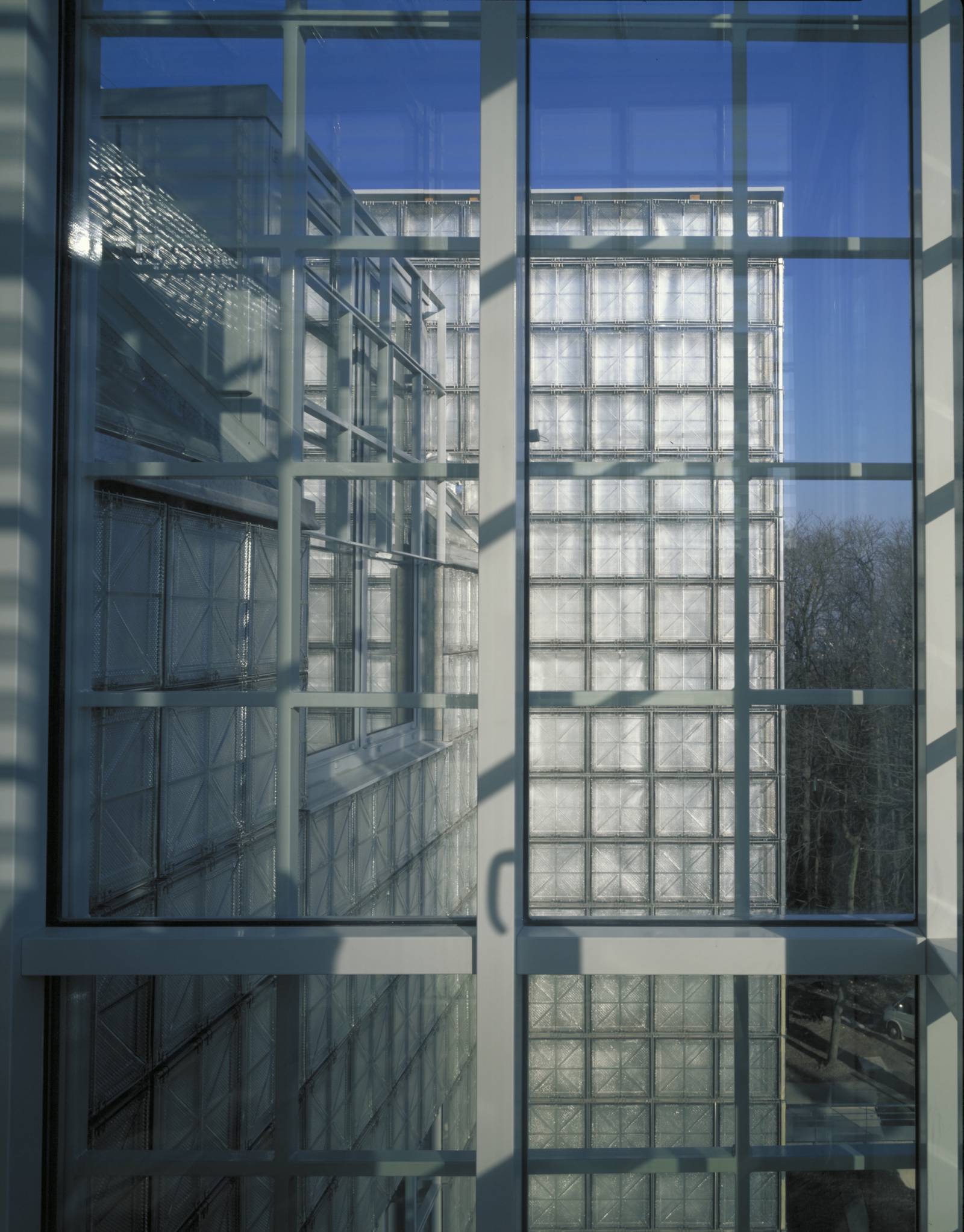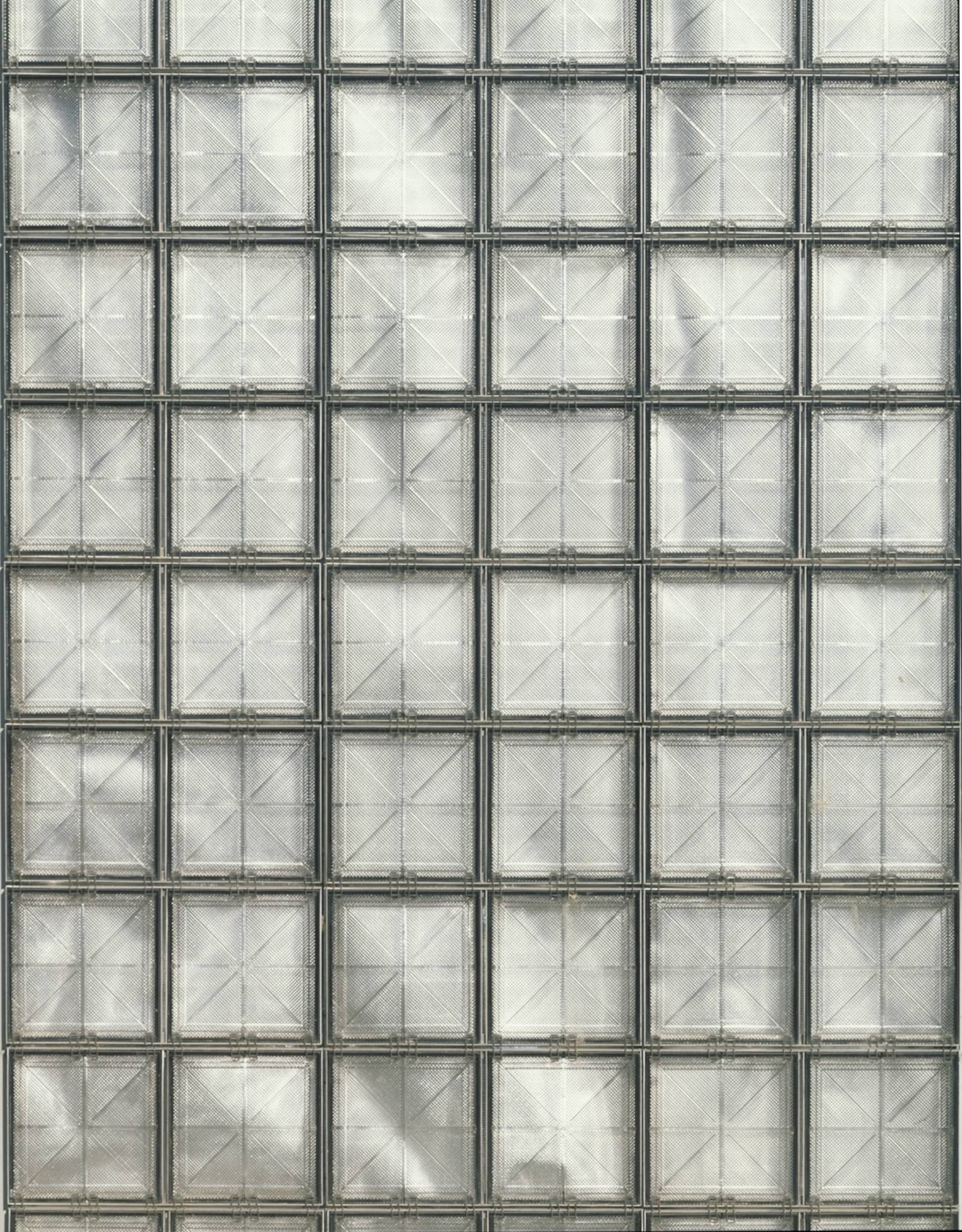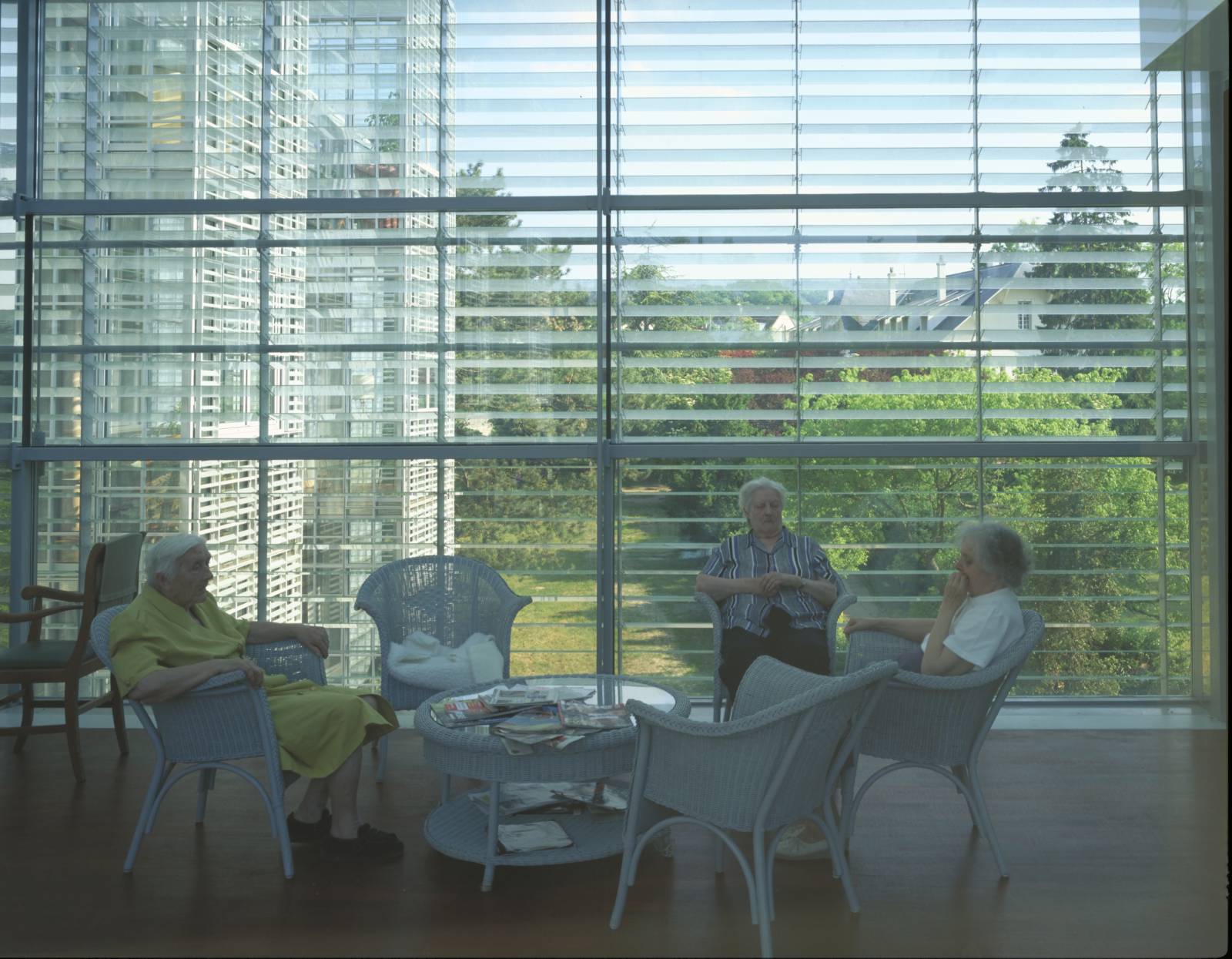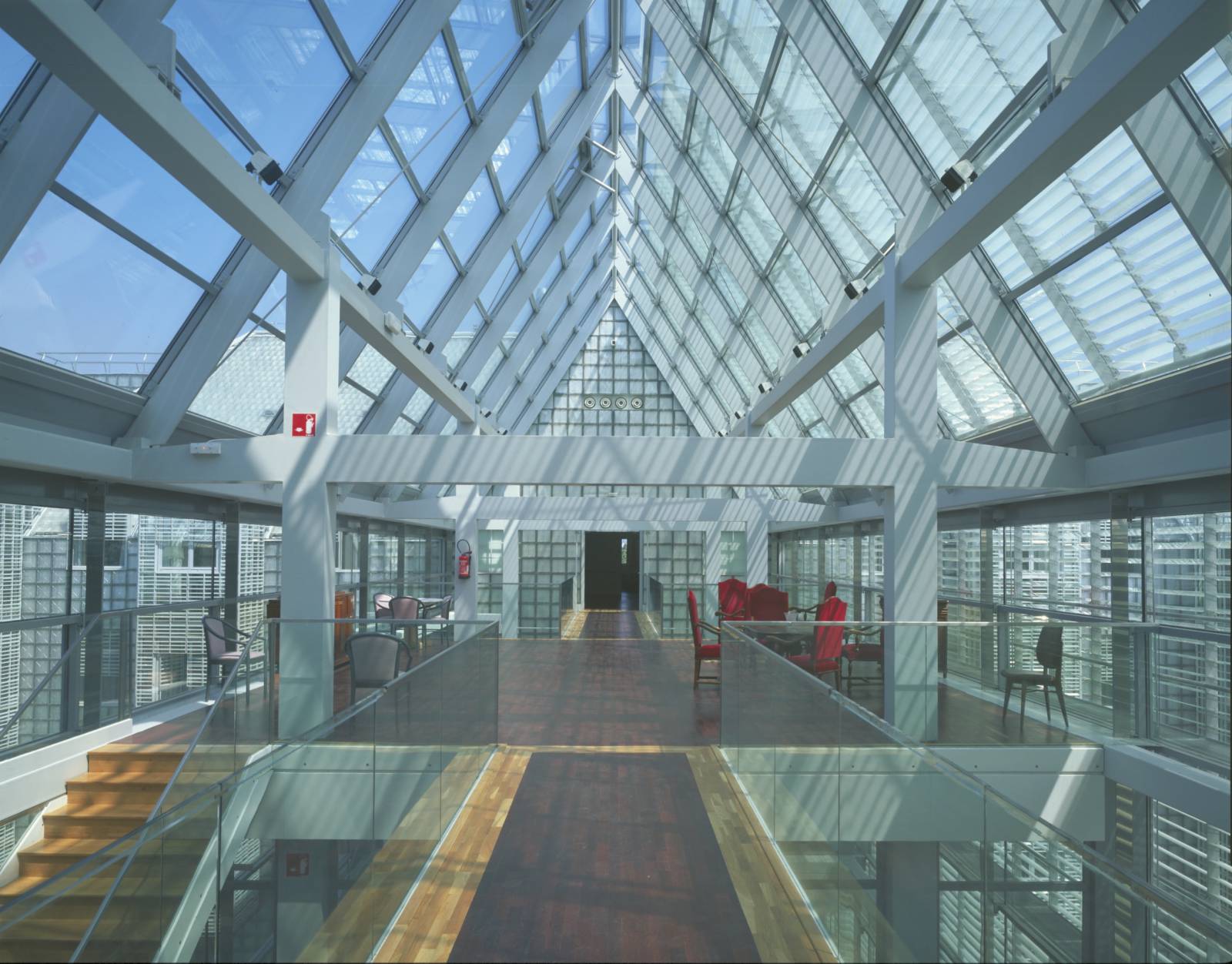Cognacq-Jay Foundation / Nursing home care
- Rueil-Malmaison, France
A discreet clarity
The idea of this architecture is to help, but to stay in the background while doing so. To help people going through a tough time, by inducing a few tiny positive emotions; to stay in the background, so as not to probe too much, not to provoke, and above all not to disturb.
It’s the eternal problem of architecture, which has to exist and to move us every now and then but let life unfold inside it without making people aware at all times of the building they’re living in.
Here I’ve opted for simplicity in keeping with an everyday routine marked by awareness of the passing of time. You need to be able to open the window completely or just a little as par for the course. You need to be able to bathe in full sun or just let in a ray. Depending on what you want, how you feel, how conscious you are. Maybe you need to go and sit on the balcony for a few minutes, just so you feel like you’ve gone out somewhere. You definitely need to be able to create darkness, the kind of darkness that lets you find rest or liberating sleep.
Simplicity calls for familiarity. How can we ‘salvage’ the familiar character of the hospital that stands there today… by taking up and developing the themes of a life-enhancing garden, a vegetable garden, with trellises, garden tables, greenhouses, animals; by maintaining the same internal circulations, of varying widths, that open out into sitting rooms, kitchens, or nurses’ quarters where you can go and get some daylight; by using familiar materials, polished wood for the woodwork, the doors, the floors; and symphonies of off-white on the walls: grey white, bluish white, eggshell white, pinkish white, beige white, mother-of-pearl white… just to make each room slightly different, and not have the usual hospital white everywhere… As much as possible, it would – still – be a house… as it is today. That’s not much…. but enough to make a difference… like the care we’ll give to the chapel and the library, and also to the nobility of the entrances, and the dignity of the death chambers.
All so many little expressions of architectural attentiveness, these things don’t exclude a more ambitious attitude that seeks by every means to best use the spatial potential of the site.
Everything has been put in place to expand the site and clarify it. To develop an interiority. The garden is optimized in size and in its synergy with the nearby trees as well as its placement largely below the main building. In summer, the façades retract and the garden takes over completely from north to south. In winter, the covered area is closed up and turns into an ‘orangery’, offering different meeting places. The rooftops turn into terraces. The buildings on the rue Blomet and the rue Millon are covered by a teak deck protected from the wind by 2-metre-high glass walls. Between these buildings a cafeteria and a library located on the same deck are able to be opened or shut depending on the season.
The ground floor is set well aboveground to create long views from the rue Millon and the rue Blomet over the trees in a garden that can be sensed but not seen. This ground floor is to be extended out by planted English-style courtyards, spaces shielded from the restaurants and kitchens. All the floors of the main building are be able to be opened up in summer, with the corridors turning into terraces thanks to the use of sliding glass doors…
All this is an exercise in clarification, in freeing up spaces and making discreet changes according to the season and the time of day. The aluminium façades are simplicity itself, with folding shutters and adjustable cantilever shades. Linear handrails similar to the blinds create horizontal rhythms, and picture windows open on to long views. Cantilevered over the garden, the shades turn into white sails and the balconies into delicate wire screens.
So many discreet subtleties of a building geared to catching the Paris light and lining a garden or a street, simply.
So many discreet spots of clarity to bring some light, as gently as possible, to the emotions felt in difficult moments.
Jean Nouvel
